THE portable energy stations have become very popular in recent years, allowing us to stay connected even when we are far from any electrical outlet. They also allow us to deal with an unforeseen power outage, or even to store our solar production for some. The market today is full of models of all kinds, and it sometimes becomes difficult to navigate this jungle of amps and watts. This is why I decided to test for you the Ampace Andes 1500, an energy station that has been making waves for some time. With its capacity of 1462Wh and its output power of 2400W (which can reach 3600W peak), it promises to meet most of our daily energy needs. But does it really keep its promises? This is what we will discover together in this in-depth test.
Unboxing the Ampace Andes 1500
First observation upon receipt: the cardboard is imposing but well protected.
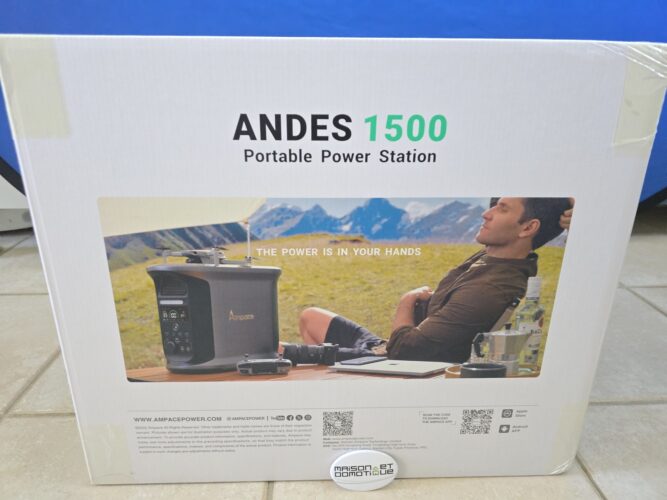
Inside, the Ampace Andes 1500 station is carefully placed, accompanied by a small bag containing the accessories: a mains power cable and a cigarette lighter cable.
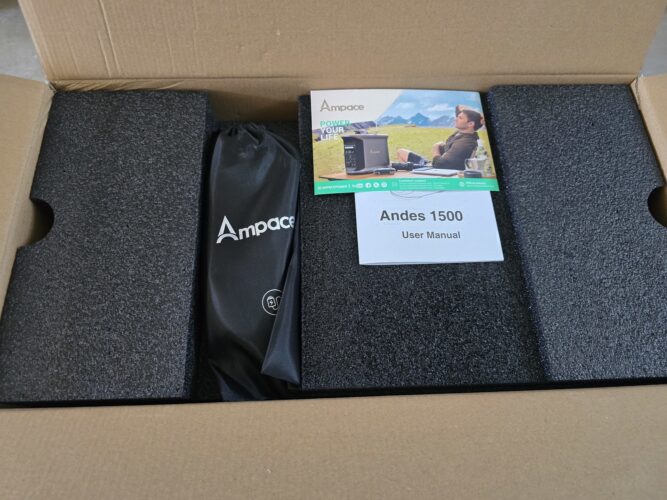
No MC4 cable for connection to solar panels, which is a bit of a shame, but it's not prohibitive since these cables are easily found for around twenty euros, and are sometimes even delivered with portable solar panels.
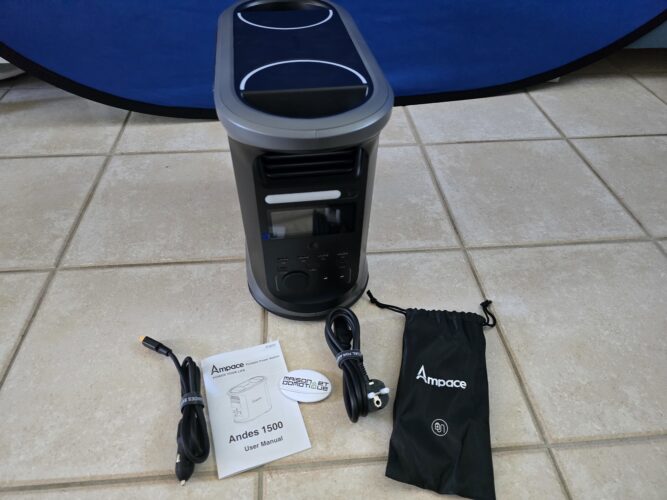
The documentation consists of a warranty card and a manual in English and German. No French in sight, but the illustrations are clear enough to understand the essentials. And then, let's be honest, who still reads textbooks these days?
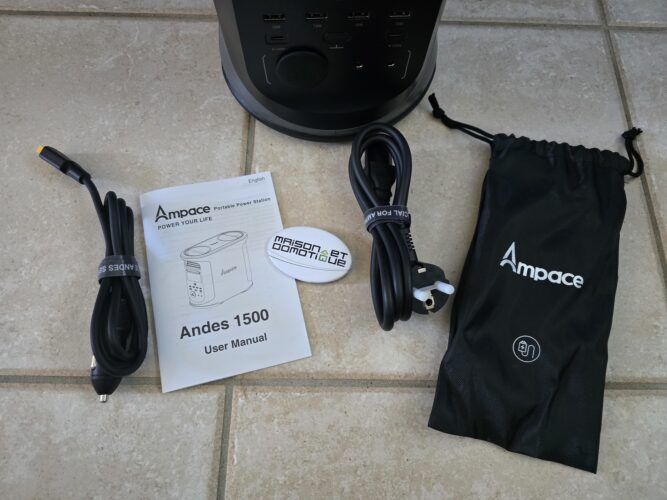
What immediately strikes you is the unusual design of this station. Unlike most models on the market, which adopt a rectangular “suitcase” shape, the Ampace Andes 1500 is a vertical tower that somewhat resembles a small gaming PC.
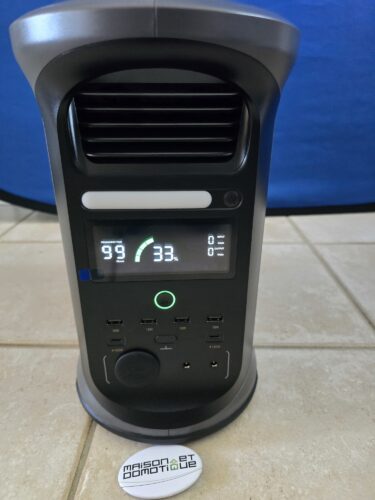
This original design gives it a modern look and allows it to fit more easily into tight spaces, such as a van or caravan.
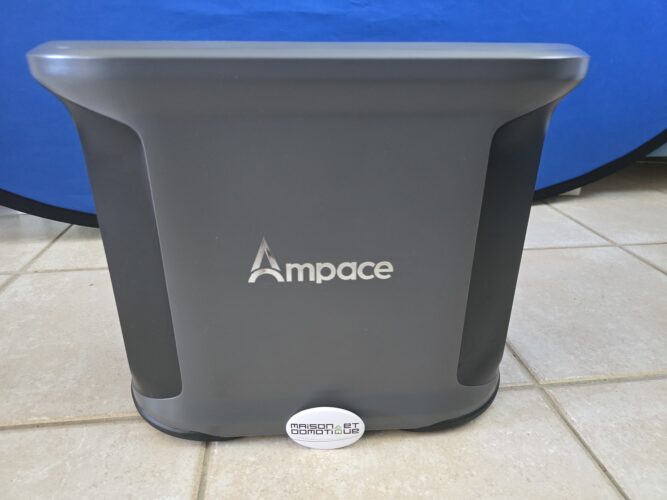
With its dimensions of 43.6 × 19.5 × 33.5 cm, it remains relatively compact despite its large capacity. It weighs a hefty 16.7 kg, but the two wide handles on top make it much easier to transport. You can grip it with one or two hands, depending on your needs, and it's really comfortable to hold. This detail makes all the difference when you have to regularly move your power station!

The build quality seems to be top notch, with sturdy materials and careful finishing. The various ports and buttons are well-arranged and easily accessible.
On the front panel, we find:
- Four USB-A ports (18W each)
- Two USB-C ports (100W each)
- A cigarette lighter socket (120W)
- Two DC 5521 sockets (12.6V, 120W each)
- An LED light with multiple lighting modes
- The power button, surrounded by LED lighting
- A button to activate the various ports
- And of course, the control screen that displays all the battery information

We also have an integrated light, with its activation button next to it:
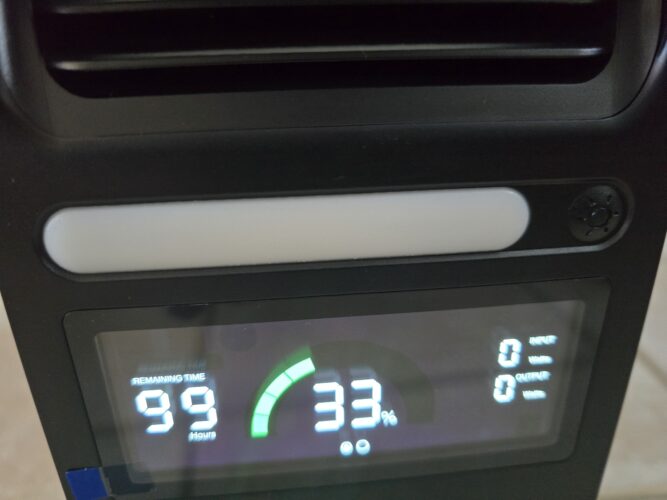
On the back, there are four 220-240V power outlets (2400W total, 3600W peak):
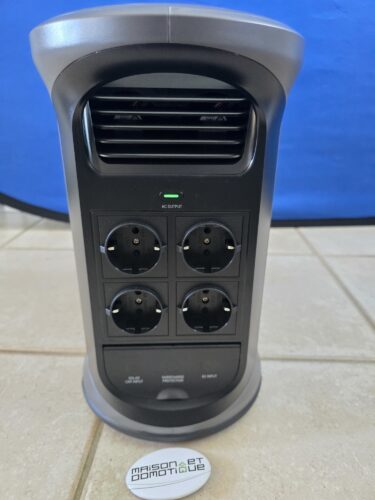
And, under a small hatch, an input for mains charging, an XT60 input for solar or cigarette lighter charging, and a reset button.
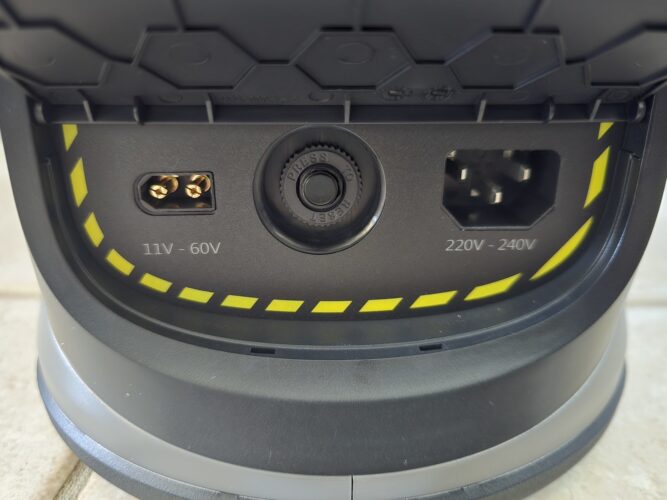
The top of the station is flat, which could have been used to integrate a wireless smartphone charger, as some competitors do, but this isn't the case. It's a shame, but the USB-C ports remain.

A slightly original feature: the RGB LEDs on the top of the station can light up in different colors and in several modes. It's a bit gimmicky, sure, but it can create a nice ambiance during a camping trip or simply serve as a nightlight in the dark.
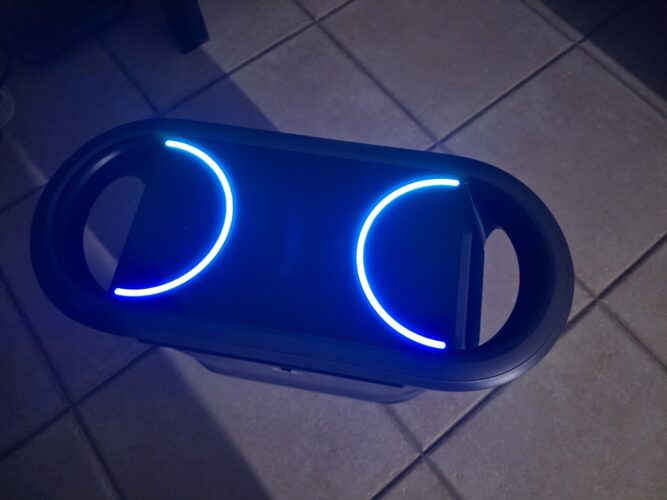
On the left side, there's also an expansion port for connecting an additional battery to increase the total capacity. A useful feature for those who need more battery life.

Getting Started with the Ampace Andes 1500 Battery
Setting up the Ampace Andes 1500 is child's play. Simply unpack it, place it on a flat, stable surface, and you're ready to go! No assembly or complex setup required. To turn it on, simply press the power button on the front. The LCD screen then lights up, displaying essential information: remaining battery percentage, input and output power, estimated time remaining, and various indicators regarding active ports.
The Ampace Andes 1500 also stands out for its connectivity. It features Bluetooth and Wi-Fi connectivity, allowing it to be controlled remotely via a dedicated mobile app, available on iOS and Android. After creating an account, simply enter a code displayed on the station's screen to pair it.
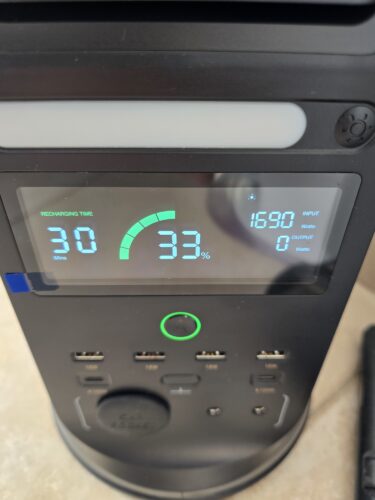
The interface is in English, but remains intuitive and easy to use.

Via this app, you can monitor the battery status, activate or deactivate the various outputs, control the ambient lighting, and even activate “Boost” mode for ultra-fast charging.
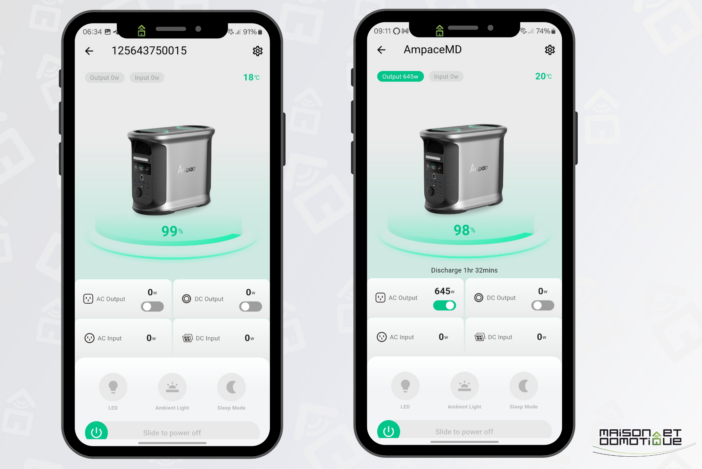
It's convenient for keeping an eye on your power station without having to move, especially if it's installed in a difficult-to-access location (such as when using it in a van).
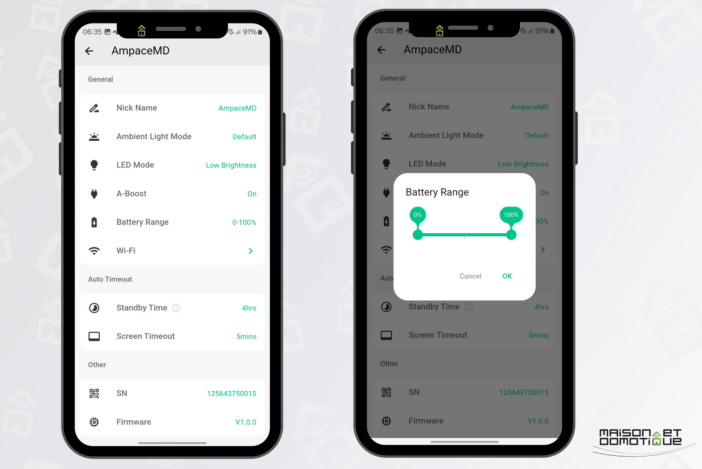
Usage and performance: a battery that packs a punch!
Now let's get to the heart of the matter: the performance of this Ampace Andes 1500 in real-life situations. And I might as well say it right away, it blew me away!
Let's start with the capacity. With its 1462 Wh (approximately 1.5 kWh), this station is in the upper middle of the market. This capacity allows it to power many devices for comfortable periods of time. For example:
A standard refrigerator for approximately 22 hours
- A 70-inch LED television for over 9 hours
- A laptop for about thirty full charges
- A smartphone for over a hundred charges
- I tested the station in several usage scenarios. First, at home, simulating a power outage. I plugged in my refrigerator, a few LED lights, my internet box, and my laptop. The station lasted a full evening without a hitch, with over 50% battery remaining in the morning.
The UPS (Uninterruptible Power Supply) mode is also included and works perfectly, switching over in just 20ms in the event of a power outage. That's fast enough that sensitive devices like computers won't even notice! So, you could easily imagine using it to prevent power outages at your workstation.
Then, I took the Ampace Andes 1500 on a weekend camping trip.
. Here again, it proved itself up to the task. I was able to power a small electric cooler, charge various electronics, and even use a small projector to watch a movie outdoors. The station's tower shape proved particularly practical in the tight space of the car, where it easily fit between two seats. I also tested the station with more power-hungry devices. An 1800W electric kettle worked without a hitch, as did a 2000W hair dryer. The 2400W output power (and up to 3600W peak) really allows it to power almost any household device. This is a considerable advantage over entry-level stations, which often top out at 500W or 1000W.The 100W USB-C ports are particularly useful for quickly charging modern laptops without the need for their own dedicated power adapter. I was able to charge my MacBook at full speed, as if I had plugged it directly into a wall outlet.
One point worth noting: when using the AC outlets (mains sockets), you can hear a slight continuous fan noise. It's not really annoying, but it's something to consider if you plan to use the station in a very quiet environment, like a bedroom.
The Ampace Andes 1500 has generous ventilation at the front and back.
The LiFePO4 (Lithium Iron Phosphate) battery offers an impressive lifespan of 6,000 charge cycles. That's twice as long as most competitors! In practical terms, this means you could use this station daily for over 10 years before noticing any noticeable degradation in its performance. A long-term investment, then.
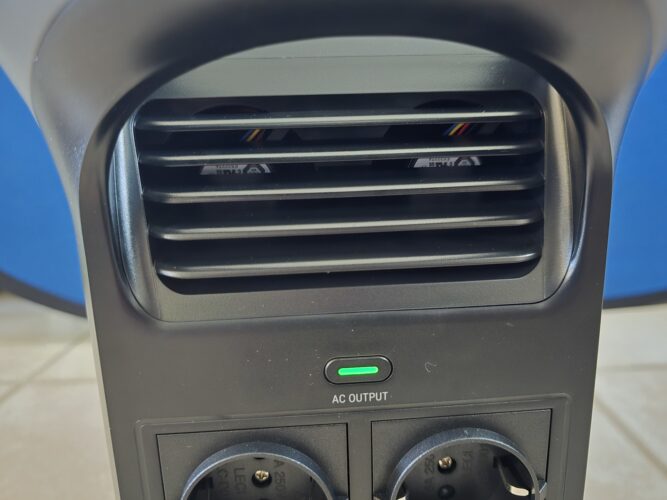
Charging: Speed is key
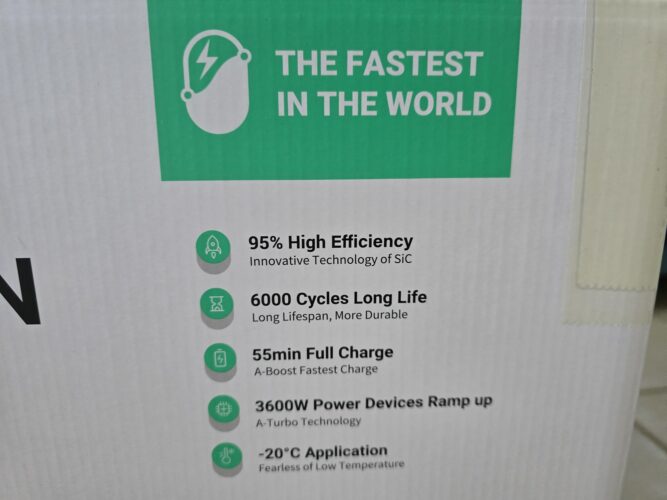
One of the strong points of the Ampace Andes 1500 is undoubtedly its charging speed. Thanks to A-Boost technology, it can fully charge in just 55 minutes when plugged into a wall outlet! This is simply impressive for a battery of this capacity.
By default, charging is done at around 800W, which allows the battery to be fully charged in about 90 minutes. But if you're in a hurry, you can activate “Boost” mode via the mobile app to boost charging power up to 1800W.
I timed the Boost mode charge: from 10%, the battery reached 100% in 50 minutes. So, the manufacturer's promise seems to have been kept! This fast charging speed is a real asset, especially when traveling where charging opportunities may be limited.
Be careful, however, as this mode places a lot of strain on your electrical system, so make sure it can handle this level of power. The battery also becomes quite noisy, as it will be subject to a lot of ventilation.
The station can also be recharged via solar panels, with a maximum input power of 600W. With optimal sunlight, this theoretically allows for a full charge in 3 to 5 hours. I tested it with a 200W solar panel on a moderately sunny day, and I was able to recover about 30% of the battery in 4 hours. It's not lightning fast, but it's still a good amount of power for adventurers or off-grid enthusiasts.
Finally, it's possible to recharge the station via a vehicle's cigarette lighter, but with a power limit of 96W, this method is very slow (about 16 hours for a full charge). It's nevertheless useful as a last resort or to maintain a certain charge level during a trip.

One small drawback: unlike some competitors, the Ampace Andes 1500 doesn't allow you to adjust the charging power in normal mode. It's either the standard 800W mode or the Boost 1800W mode, with no intermediate power. This is a shame for those who want to optimize their power consumption or use the station on a limited electrical installation.
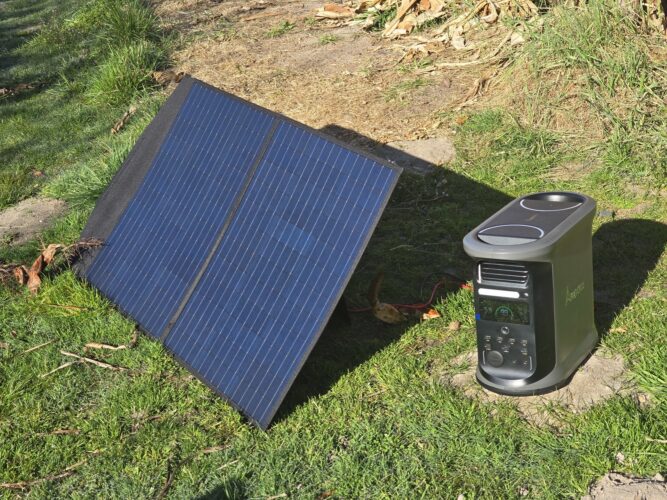
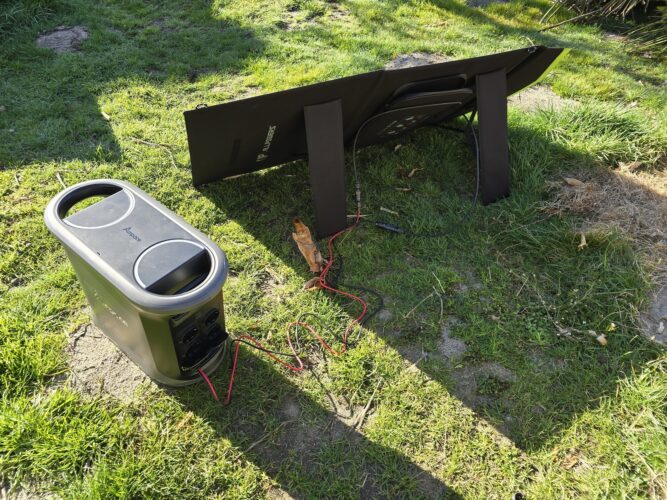
Some concrete use cases
To give you a better idea of what this energy station can do, here are some usage scenarios I was able to test or simulate:
Scenario 1: Power outage at home
During a storm, a power outage occurs. Thanks to the Ampace Andes 1500 in UPS mode, my computer continues to run without interruption. I can also keep my refrigerator running overnight (average consumption of 60W), keep my internet box active to stay connected (20W), and have additional lighting with a few LED lamps (30W in total). With this configuration consuming approximately 110W, the station can last more than 12 hours, more than enough to get through the night while waiting for power to be restored.
Scenario 2: Camping Weekend
For a two-day weekend without access to electricity, the Ampace Andes 1500 allowed me to power a small electric cooler (45W on average), charge several smartphones and cameras, use a small Bluetooth speaker, and even run a portable coffee maker in the morning (800W for a few minutes). In the evening, I was able to project a movie onto a white sheet using a mini projector (100W) for two hours. In total, I consumed about 60% of the battery capacity over the two days, which leaves a comfortable margin. Scenario 3: Small Outdoor Project
To renovate a garden shed not connected to the electrical grid, I used the Ampace Andes 1500 to power various tools: a drill (800W intermittently), a sander (600W), and a small circular saw (1200W for a few cuts). I also plugged in a construction site radio and charged my smartphone during breaks. Over a day's work, I used about 70% of the battery, which is quite respectable considering the power of the tools used.
For gardening, the battery is also very practical, avoiding having to unroll meters of extension cord across the garden. Here, I trimmed my entire hedge in one afternoon by plugging in an electric hedge trimmer:
Scenario 4: Mobile Teleworking
Set up on my recreational land for a day of teleworking, I powered my laptop (60W on average), an external screen (30W), my 4G router (10W), and a small coffee machine for breaks (800W for a few minutes, 3 times a day). I also recharged my smartphone and wireless headphones. In total, this configuration consumed about 40% of the battery over an 8-hour day. The station could therefore easily have lasted two full days of work.
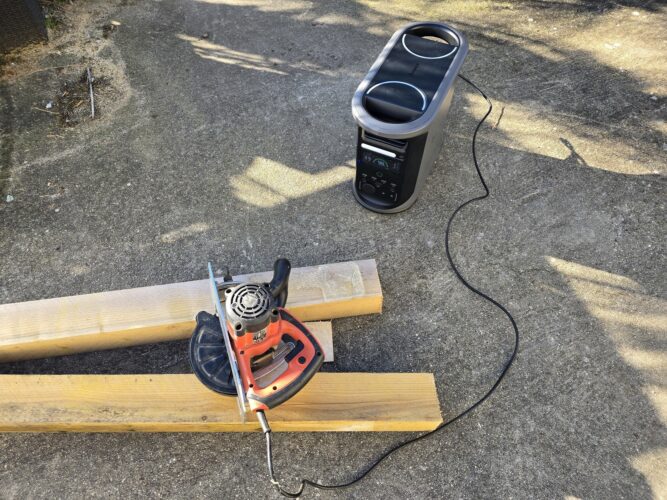
These few examples demonstrate the versatility of the Ampace Andes 1500 and its ability to adapt to different needs: whether for home, professional, or leisure use, it offers a reliable and efficient solution.
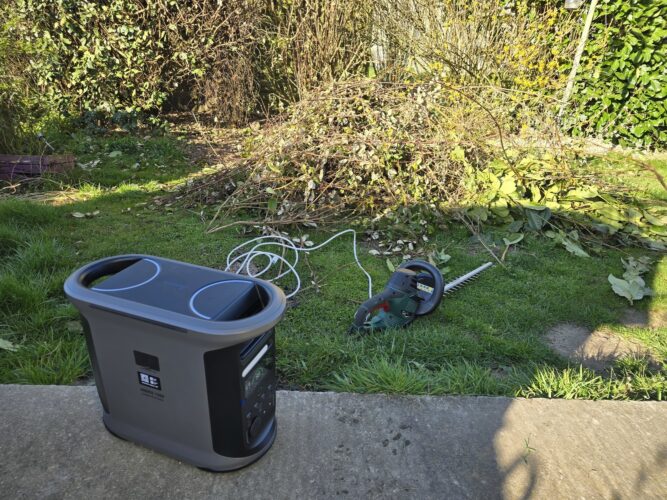
Conclusion: A power station that delivers
After several weeks of intensive use, I am truly won over by the Ampace Andes 1500. This portable power station combines many advantages that make it a particularly interesting product in a highly competitive market.
Its strengths are undeniable: a generous capacity of 1462Wh, a high output power of 2400W (3600W peak), ultra-fast charging in 55 minutes, a durable LiFePO4 battery guaranteed for 6000 cycles, and modern connectivity with control via mobile app. All this in an original tower-shaped design that makes it easy to integrate into tight spaces.
I particularly appreciated its versatility. Whether it's to bridge a power outage at home, power devices during a weekend in the great outdoors, or supply energy to a small construction site, the Ampace Andes 1500 delivers without a hitch. Its high output power can power virtually any household appliance, including traditional power-hungry ones like kettles or hair dryers.
Fast charging is another major advantage. Being able to fully charge in less than an hour is a real game-changer for intensive or mobile use. And the ability to charge via solar panels provides significant autonomy for adventurers or those who prefer self-consumption.
Ergonomically, the two large top handles make transport much easier despite the device's 16.7 kg weight. The port layout is well thought out, with easy access to all connectors. The LCD screen is clear and readable, providing all essential information at a glance.
Of course, no product is perfect. We can regret the absence of an MC4 cable for solar connection in the package, the slight constant fan noise when using the AC outputs, and the inability to finely adjust the charging power outside of standard and Boost modes. The mobile app, while functional, could also be richer in features, particularly in terms of programming or mixed charging strategies (mains + solar).
Despite these few areas for improvement, the Ampace Andes 1500 remains a very convincing portable power station, distinguished by its original design, solid performance, and exceptional charging speed. Whether for home use in case of a power outage, to power your devices during outdoor adventures, or to provide a reliable source of energy in a remote location, it's ready to go.
For just €769 (using the code NNNFRAP15P), it offers excellent value for money, especially considering its durability, with a claimed 6,000 charge cycles. An investment that could well last you more than a decade!


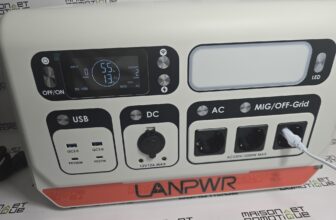
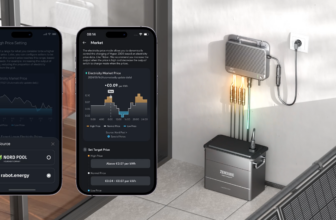
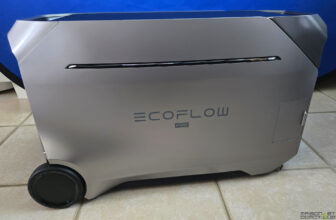


Please remain courteous: a hello and a thank you cost nothing! We're here to exchange ideas in a constructive way. Trolls will be deleted.